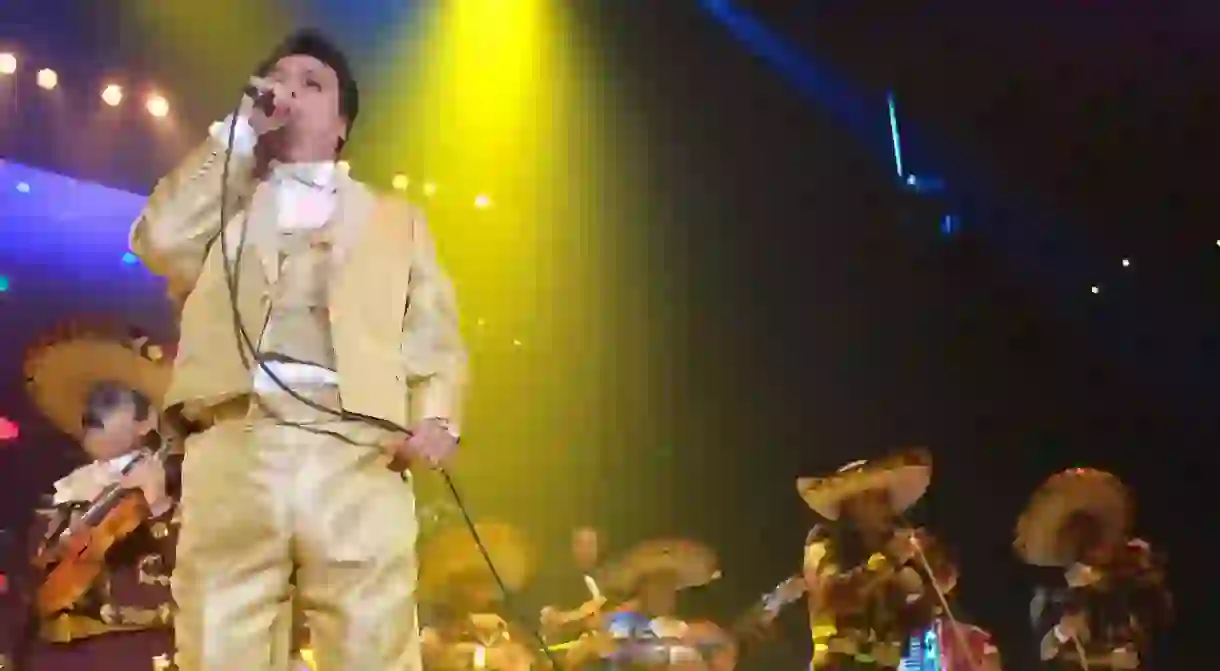A Spotlight On Mexican Singer Juan Gabriel

Born Alberto Aguilera Valadez in Michoacán, this famed Mexican singer is best known as Juan Gabriel from Ciudad Juárez. On August 28th, 2016 he passed away suddenly at his Santa Monica home, although his status as a legend of the Mexican music scene, and his status as a beloved artist throughout the Americas, will undoubtedly ensure that he lives on forever in popular culture. Here’s everything you need to know about Juan Gabriel.
Alberto (as he was then known) moved to Ciudad Juárez at an early age with his mother and nine siblings, after the interment of his father in a psychiatric hospital. (The Gabriel of Juanga’s stage name was actually inspired by his father.) It was in this bleak border town, that would go on to give him his nickname El Divo de Juárez, that he began to take an interest in all things musical. He moved in with his teacher Juan Contreras at the age of 13, the inspiration behind the ‘Juan’ of his stage name, and by 14 he had already composed his first song (‘La muerte de Paloma’) and begun singing in the local church choir. At 15 he competed under the pseudonym of Adán Luna on the TV show Noches Rancheras, and later worked at a bar called Noa-Noa. Sound familiar? That’s because it was the inspiration for what would go on to become one of his most famous songs ‘Noa Noa’.

Juanga travelled multiple times to Mexico City in an effort to gain a recording contract, but was constantly knocked back. It took being wrongly imprisoned for robbery to get him touch with singer La Prieta Linda, who helped him on his path to future stardom. After eventually signing a suitable record deal, he released his first album El Alma Joven… in 1971 to much fanfare. In total, over the length of his 45-year career, Juan Gabriel would go on to release 34 studio albums, as well as a range of duets, live albums and compilations that spanned all number of genres. That equates to a writing and recording legacy of over 1000 songs – a phenomenal creative output by anyone’s standards. While most known for his ballads and collaborations with mariachi bands, he also dabbled in rancheras, disco, pop and rock. Right up until his untimely death in 2016, he was still scoring number ones at a rate of knots; in 2015 and 2016 alone, he had four number one albums. He has also been inducted into both the Billboard Latin Music Hall of Fame and the International Latin Music Hall of Fame, and has a Hollywood Walk of Fame star.


Besides his abundant musical talent, Juanga had stage charisma in spades. He was well known for his flamboyant attire, and for having the characterful stage shows to match, and now the name Juan Gabriel is almost inextricably connected with glittery suits, exaggerated gestures and a penchant for throwing alcohol around the stage during performances. It was widely assumed that despite having five children by two women, Juan Gabriel was gay. While he stopped shy of ever confirming this assumption, he was once famously asked in an interview, to which he replied, ‘lo que se ve no se pregunta’ (literally, ‘that which is seen, isn’t asked’). It is therefore surprising that he achieved such levels of stardom and acceptance in a country as homophobic and conservative as Mexico. In fact, his untimely death was met with such vast levels of public grief that Mexico City’s Palacio de Bellas Artes hosted a public homage to the late, great Juan Gabriel.














